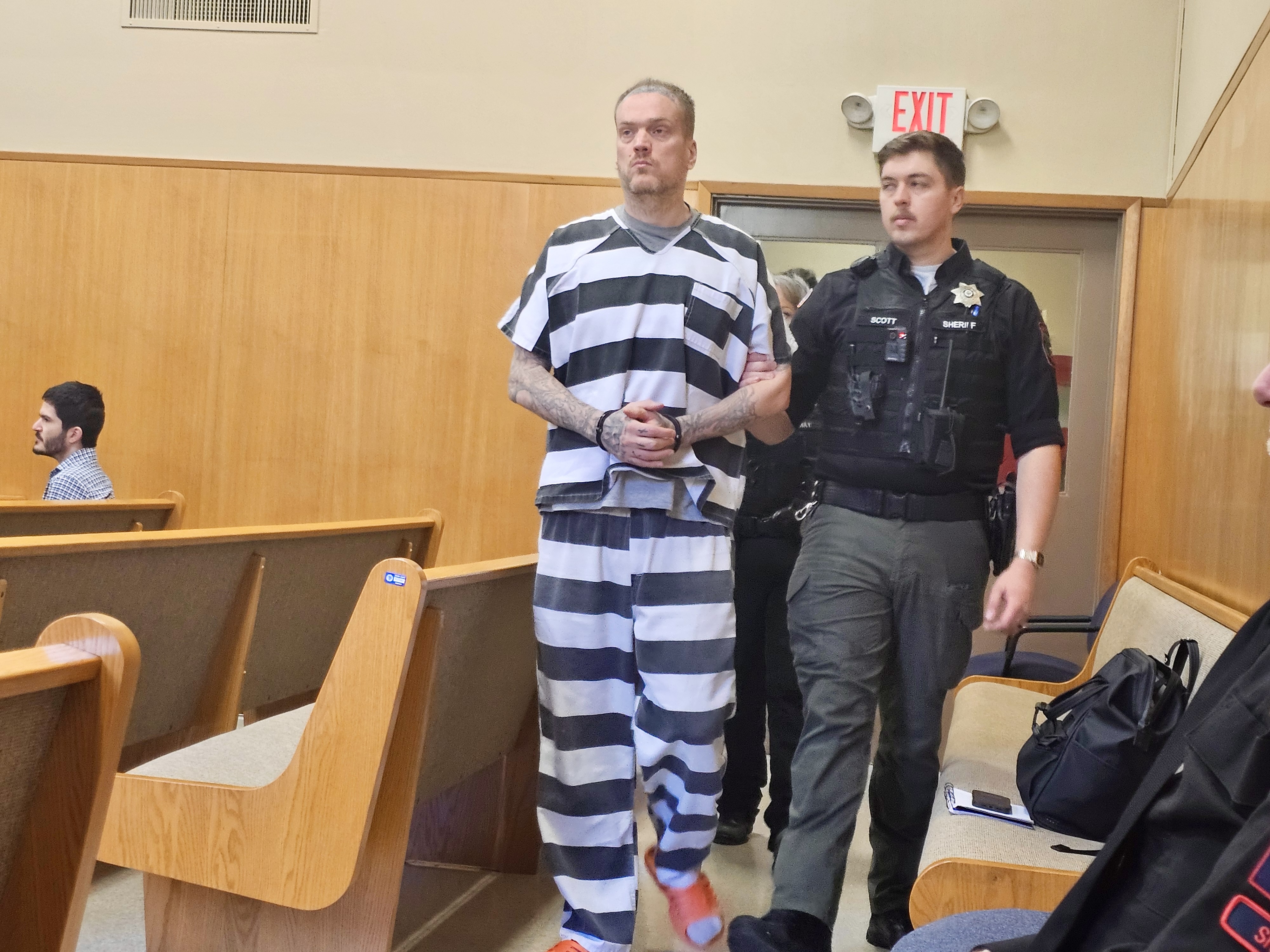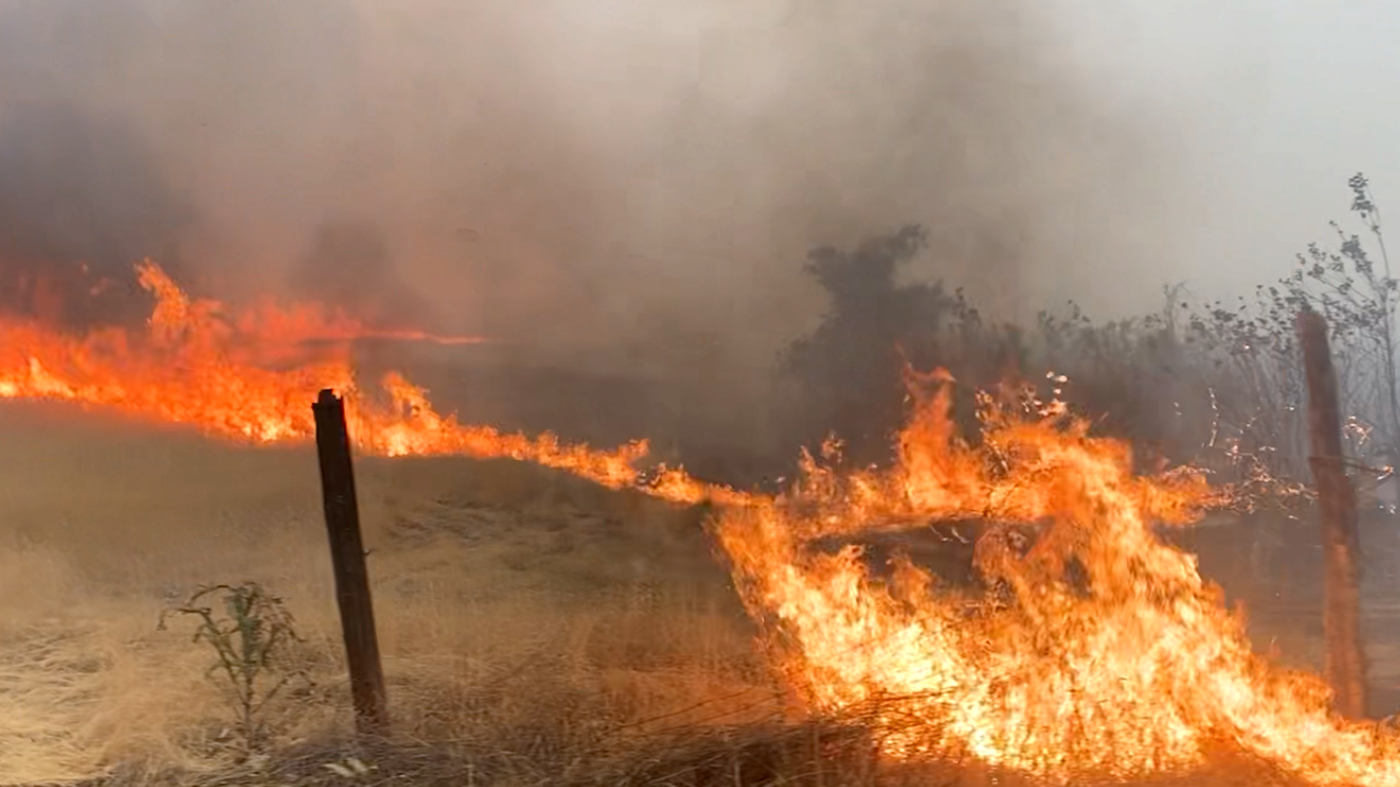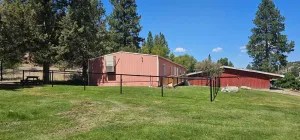‘They were fine, tall men, well dressed’ – First descriptions of the Indians of Grant County
Published 4:00 pm Sunday, January 26, 2003

- An impressive group of Paiute Indians gathered for a powwow at Burns in 1904. This photo was taken by J. McMullen. The Burns Paiute Tribe remains active throughout the region today, as do the Confederated Tribes of the Umatillas and the Confederated Tribes of the Warm Springs. Photo of the Grant County Historical Museum
The first written description of Grant County Indians is from Peter Skene Ogden. He was a trapper for the Hudson Bay Company who entered the area with a large party in January of 1826. Ogden was surprised and disappointed by the small number of Indians he encountered since he was counting on them to act as guides and to trade for food. He entered the county by dropping into the South Fork some 20-30 miles below Dayville. He followed the South Fork to the Main Stem John Day and then went east through the valley and left the county east of Prairie City. In this entire stretch he only met Indians around the present site of Dayville.
Trending
Here are Ogden’s observations on the Indians he encountered in Grant County. He refers to them as Snake Indians, who were most likely members of the Paiute nation.
“Saturday, January 14th 1826 – [5-10 miles south of Dayville] We found Snake huts not long abandoned.”
Sunday, 15th – One of my men saw two Snake Indians. He conversed by signs with them, but they could not be persuaded to come to camp.
Trending
Tuesday, 17th – Mr. McKay, who was in quest of deer, found a Snake Indian; hid in the rocks, secured him and brought him to the camp, treated him kindly and in the evening he informed us that this fork will conduct us nearly to Snake River.
Wednesday, the 18th – The Snake Indian left us this morning. I sent my guide with him, as he said he had 10 beaver skins, to induce him to return to trade. At night my guide returned and informed me the Snake Indian on reaching his hut, found all abandoned; his family and followers had fled, but the Snake had gone in pursuit and would bring them to my camp.
Thursday, 19th – Early five Snake Indians paid us a visit and traded six large and two small beaver for knives and beads and 10 beavers with my guide for a horse. I treated them kindly and made a trifling present to an old man with them whom they appeared to respect. They were fine, tall men, well dressed, and for so barren a country in good condition.
Thursday, 26th – Here we leave the waters of Day’s River [probably leaving John Day Valley near Prairie City]. Where the Indians of this part resort in winter I cannot (tell); have no doubt concealed in the mountains; – my Snake hunter killed one antelope.”
The small size and limited number of winter villages in the John Day Valley in 1826 is surprising. Archaeological research has demonstrated that Indian people have lived in Grant County for over 11,000 years and winter villages in the John Day Valley dates to at least 4,000 years ago. Why would an area with mild winter weather and abundant natural resources not be more heavily used?
This is very different from the situation that Ogden encounter near Malheur Lake in November of 1826:
“Thursday, November 3rd – It is incredible the number of Indians in this quarter. We cannot go 10 yds. without finding them. Huts generally of grass of a size to hold six or eight persons. No Indian nation so numerous as these in all North America.”
Almost certainly there had been more year-round use of the John Day Valley before European disease epidemics devastated the Indian population in the 17th and 18th centuries. It also seems likely that armed conflict between tribes rendered the valley a “no man’s land” that was not safe to settle. Columbia Plateau tribes with ready access to guns and horses, such as the Umatilla and the Warm Springs, were in conflict with the Paiute of the Great Basin. The John Day Valley was the area where these large Indian nations overlapped.
Ogden goes on to note that the Paiute around Malheur Lake were starving and not able to get the arms to defend themselves and get to the bison grounds of the Plains:
“Thursday, November 3rd – An old woman camped with us the other night. From the severe weather last year, her people were reduced for want of food. – Many a day they pass without food and without a murmur. Had they arms and ammunition they might resort to buffalo; but without this region the war tribes would soon destroy them. This country is bare of beaver to enable them to procure arms. Indian traders cannot afford to supply them free.”
By 1862 when gold was discovered and miners flocked into the county the balance of power between the Indian nations had shifted somewhat. The Columbia Plateau tribes had signed treaties with the United States in 1855 and had settled onto their reservations. They continued to come to the John Day Valley and surrounding mountains in the summer months to hunt, gather food crops and trade with Great Basin tribes. The Paiute had procured guns and horses by this point and were raiding the reservation tribes as well as the settlers who were encroaching on their land. Paiute winter villages had been established around the present sites of John Day, Canyon City and Prairie City. These villages were abandoned immediately after the miners arrived in the valley. Since the miners arrived in the summer the villages were probably empty and their inhabitants dispersed to their seasonal hunting and gather grounds.
The desendants of the Indian people who lived in Grant County at the time of Euro-American settlement are associated with a number of nearby reservations. These include the Burns Paiute Tribe located in Burns, the Confederated Tribes of Umatilla Indian Reservation in Pendleton and the Confederated Tribes of Warm Springs in Warm Springs. Both the Umatilla and Warm Springs reservations have worldclass museums where you can learn more about the history of these Indian nations. Information can also be found at these Web sites: www.warmsprings.com, www.harneycounty.com/Paiute.htm and www.umatilla.nsn.us/main.html.
Don Hann is an archaeologist for the Malheur National Forest.









